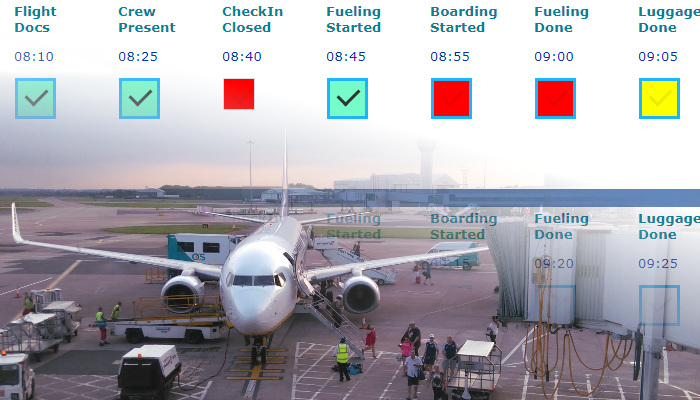WHATíS THE OPTIMAL TURNAROUND TIME?
|

|
The turnaround process between arrival and departure of an aircraft is a key element in airline operations.
It touches punctuality, efficiency and even customer experience.
The work of multiple departments and external parties folds together in a short time window.
This makes it a quite complex process too.
|
Too many airlines stick to a static approach, missing out on new opportunities for better reliability and efficiency.
PUNCTUALITY
Contrary to common belief, there is no straight correlation between longer turn times and punctuality.
Of course targets must be realistic.
However, in most cases, giving more time to the process does not have long-lasting effect. In practice, the extra time will gradually be absorbed. For one because a lot of parties plan on the ETD. Theyíll just start working later.
Also longer turn times take the momentum out of the process. Most parties will not be able to work straight thru from arrival to departure, which is less efficient, causes extra ramp movements and adds disruption risks.
Too often longer turnaround times are the easy way out.
EFFICIENCY
On the other side, a shorter turn does not always create better efficiency.
While they often do, itís no automatism to get extra production, better crew pairings, higher fleet efficiency or extra revenues. Also, short turns can reduce the flexibility for departments to optimize their resource planning.
When defining turn times, itís important to have a clear view on such effects.
OPTIMAL TURN TIME
So what is the optimal turn time standard?
Consequence of the above is that the optimal turn for a specific aircraft type can differ per network and even per individual flight.
Not all turns need to be as sharp as a Formula 1 pit-stop and compact turns can only have efficiency benefits if punctuality is secured by adjacent measures.
So instead of focusing on a fixed turn time standard, more important is to see the total picture.
CONTINGENCY PLANNING
That total picture says that a standard time, which includes a small buffer in each turn, is a very ineffective way to shield a schedule against disruptions.
In most cases there simply will not be a disruption, so those buffers are just lost. In cases where the disruption is a little more substantial, small buffers wonít suffice.
More effective is to have smartly planned larger schedule buffers at strategic times.
However, in order to make such concept work, the operational process has to be flexible to make quick changes.
MODERN OPERATIONS CONTROL
That means that each sub-process needs pre-defined contingency options that can be triggered instantly.
Many departments already work with target times derived from the ETD, but monitoring them is a local affair and the threshold for instant updating is too big.
The whole idea should be to trigger responses far before disruptions result in a delay. If someone drops the ball, a joint effort must be launched immediately to minimize the impact.
This calls for more integration of OCC, GCC and Ramp control functions, allowing for detailed monitoring and dynamic orchestration. Todayís technology gives us the option to do this without creating red tape.
The concept of strict turn time standards is up for a major overhaul. The good thing is that this gives airlines a chance to make a next step in pursuit of both better reliability and better efficiency.
More on this subject...
back to top
